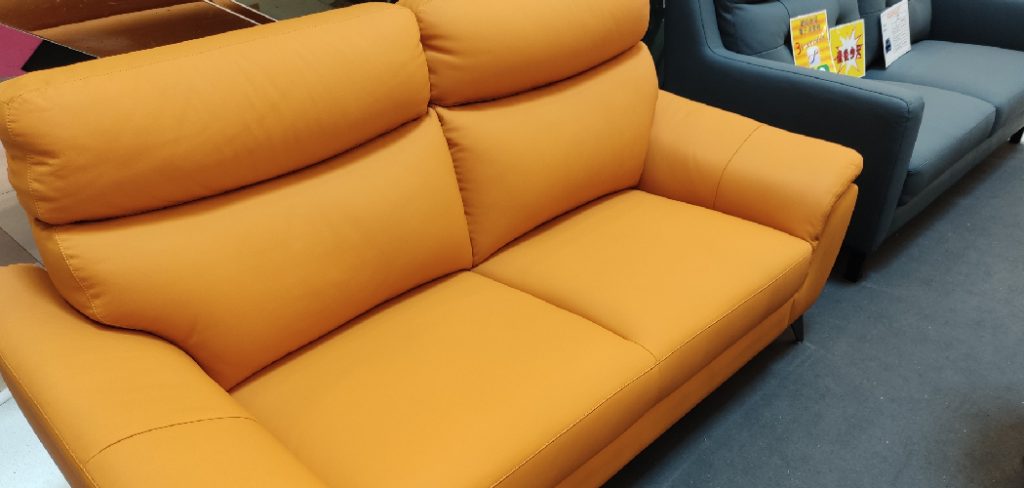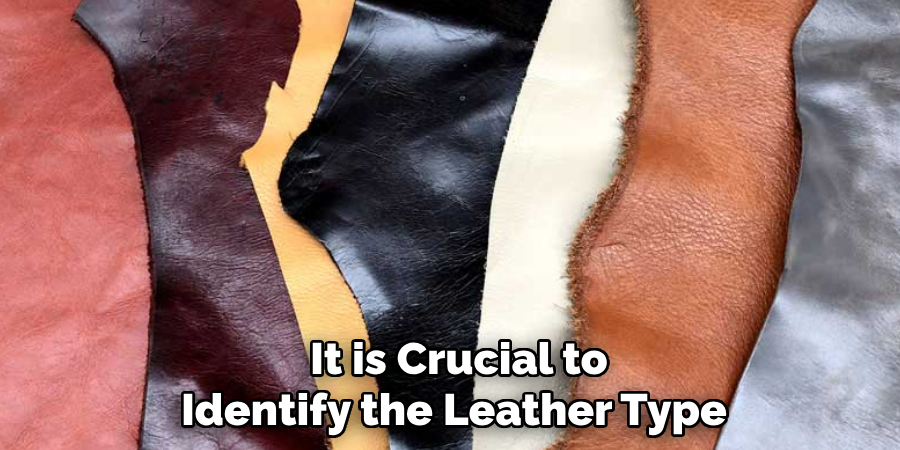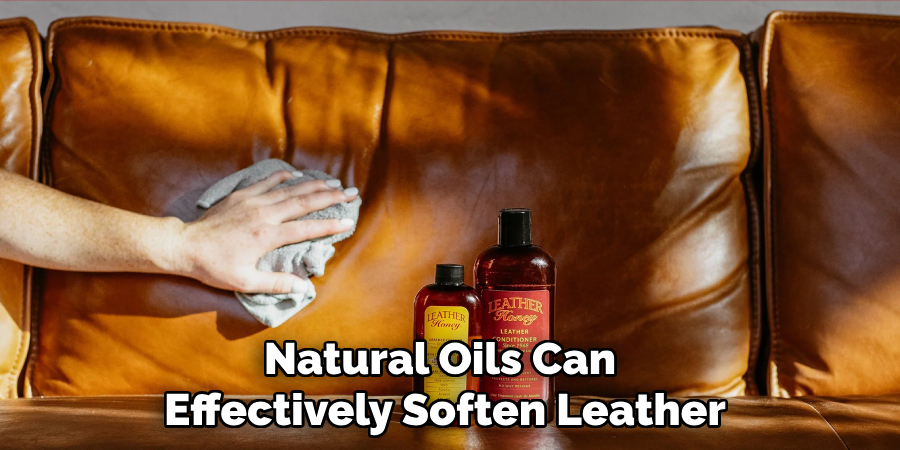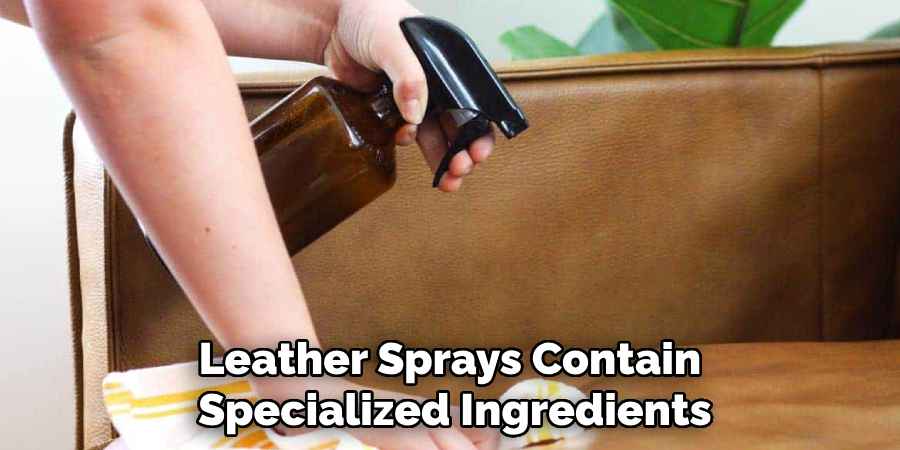A leather couch is both a stylish and durable piece of furniture, but over time, it can become stiff or lose its flexibility. This can be caused by factors like aging, lack of proper care, or exposure to sunlight and dry air. Fortunately, softening a leather couch is a straightforward process that can restore its comfort and extend its lifespan. This guide explores the key aspects of how to soften a leather couch. By using the right techniques and products, you can bring back the suppleness of your couch and keep it looking its best for years to come.

Reasons Why Leather Becomes Stiff
Aging
Over time, leather naturally loses its oils, which are essential for maintaining its softness and flexibility. Without these oils, the material begins to dry out and stiffen, making it less comfortable and prone to cracks.
Exposure to Sunlight
Direct exposure to sunlight can cause the oils in leather to evaporate more quickly, leading to dryness. Prolonged sunlight exposure may also fade the color of the leather and create an uneven texture.
Lack of Maintenance
Neglecting regular care, such as conditioning, can make leather lose its natural moisture. Without periodic treatment, leather can start to harden and lose its supple qualities.
Dry Air
Environments with low humidity can draw moisture out of the leather, causing it to stiffen over time. Air-conditioned or heated spaces often contribute to this issue by reducing humidity levels indoors.
Spills and Stains
Liquids or stains that are not promptly cleaned can seep into the leather and alter its surface, potentially causing it to harden. Harsh cleaning agents used to remove these stains may further contribute to stiffness.
Identifying the Type of Leather
Before proceeding with softening your leather couch, it’s important to identify the type of leather used. Different types of leather require different care techniques, and using the wrong methods could damage the material. Below are some common types of leather and tips for identifying them:
Aniline Leather
This type of leather has a natural, untreated appearance, often showcasing the hide’s natural marks and textures. Aniline leather is soft and luxurious, but it is also more susceptible to stains and requires gentle care.
Semi-Aniline Leather
Semi-aniline leather has a light protective coating, making it more durable than aniline leather while still maintaining a natural look. It usually has a slight sheen and a more consistent color.
Pigmented Leather
This is the most durable type of leather, often coated with a protective layer that makes it resistant to stains, scratches, and wear. Pigmented leather typically has a uniform color and a less natural texture compared to aniline or semi-aniline leather.
Bonded Leather
Bonded leather is made from leather scraps and fibers bonded together with adhesives, often coated to mimic the appearance of genuine leather. While cost-effective, it is less durable and may require specific care products.
Suede or Nubuck
These leathers have a soft, velvety texture and are more delicate than other types. They are particularly prone to staining and require specialized products and techniques for maintenance.

10 Methods How to Soften a Leather Couch
1. Apply a Leather Conditioner
Leather conditioners are specifically designed to restore moisture and flexibility to leather surfaces. Choose a high-quality conditioner that contains natural oils such as lanolin or mink oil. Apply the conditioner using a soft cloth, working it into the leather in circular motions. Allow it to absorb for several hours or overnight before buffing off any excess. Regular conditioning not only softens the leather but also protects it from drying and cracking over time.
2. Use Natural Oils for Deep Hydration
Natural oils such as coconut oil, olive oil, or neatsfoot oil can effectively soften leather by penetrating deep into its fibers. Warm the oil slightly and apply a thin layer to the leather surface using a clean cloth. Let it soak in for a few hours before wiping off any excess to avoid a greasy finish. However, test a small area first, as some oils may darken the leather or alter its appearance.

3. Massage the Leather
Just like human skin, leather benefits from gentle massaging to increase flexibility. Using your hands, knead and stretch the leather, focusing on stiff or rigid areas. This helps distribute oils and conditioners evenly, making the leather more supple over time. Consistent massage, especially in combination with conditioning, ensures that your leather couch stays soft and comfortable.
4. Use a Leather Softening Spray
Leather softening sprays contain specialized ingredients that penetrate and loosen stiff fibers. These sprays are easy to apply and quickly absorbed, making them a convenient option. Simply spray an even layer over the couch, let it sit for a while, and then gently rub the surface with a soft cloth. Make sure to follow the manufacturer’s instructions to achieve the best results.

5. Keep the Leather Away from Direct Heat
Excessive exposure to heat sources like direct sunlight, radiators, or heating vents can dry out and stiffen leather. To prevent this, position your couch away from heat sources and maintain a stable room temperature. If your leather couch has already suffered from heat damage, applying a conditioner or natural oil can help replenish lost moisture and restore softness.
6. Use a Humidifier to Maintain Moisture Levels
Leather can become dry and brittle in low-humidity environments. To counteract this, use a humidifier in the room where your couch is placed. Maintaining an optimal humidity level prevents leather from losing its natural moisture, keeping it soft and pliable. This method is especially useful during winter months when indoor air tends to be drier.
7. Apply a Vinegar and Linseed Oil Solution
A homemade mixture of white vinegar and linseed oil can be an effective leather softener. Mix one part vinegar with two parts linseed oil, shake well, and apply a small amount to the leather using a soft cloth. Let it sit for a few hours before buffing with a clean cloth. The vinegar helps remove dirt and restore shine, while linseed oil deeply moisturizes the leather, leaving it soft and smooth.
8. Break in the Leather with Regular Use
New leather couches can feel stiff due to the manufacturing process. The best way to naturally soften them is through regular use. Sit on different areas of the couch, shift positions, and gently bend or press on the cushions to encourage flexibility. Over time, the leather will conform to your movements and become more comfortable.
9. Steam the Leather for Added Softness
Steaming is a lesser-known but effective technique for softening leather. Using a handheld garment steamer or a steam iron (set to a safe distance), gently pass steam over the leather surface. The moisture from the steam will help loosen the fibers, making the leather more pliable. Be sure to follow up with a leather conditioner afterward to seal in the moisture and prevent drying.

10. Protect the Leather with Regular Maintenance
Consistent care is key to keeping leather soft and in good condition. Dust and clean your couch regularly with a damp cloth to prevent dirt buildup, which can contribute to stiffness. Avoid using harsh chemicals or soaps that can strip natural oils. Additionally, schedule routine conditioning every few months to ensure that the leather remains hydrated and supple.
Things to Consider When Softening Leather
Leather Type Matters
Different types of leather respond uniquely to softening techniques. For instance, aniline leather may require more delicate products and methods, while pigmented leather can tolerate a wider range of treatments. Always identify your leather type before applying any products or methods.
Test on a Small Area First
Before applying any conditioner, oil, or homemade solution, test it on an inconspicuous area of the couch. This ensures that the treatment won’t discolor or damage the leather. Patience and precaution here can save you from irreversible damage.
Avoid Over-Saturation
Using too much product, especially oils, can over-saturate the leather and result in a greasy or sticky finish. Apply products sparingly, and always wipe away excess to maintain the leather’s natural texture and appearance.
Maintain Regular Care
Softening leather is not a one-time process. Regular maintenance, including cleaning, conditioning, and protecting the leather from extreme conditions, helps prolong its softness and elegance for years to come.
Know When to Consult a Professional
If your couch has significant wear, damage, or discoloration, some DIY methods may not suffice. Consulting a leather care professional can ensure the right techniques and products are used without further harm to your furniture.
Conclusion
Softening and maintaining a leather couch may require time and effort, but the results are well worth it. By using proper techniques, such as conditioning, massaging, and protecting the leather from harsh environments, you can ensure your couch stays comfortable, beautiful, and durable for years to come. Remember to tailor your approach based on the type of leather and always test products on a small area first. Regular care and attention not only enhance the appearance and feel of your couch but also extend its lifespan, allowing you to enjoy your investment to the fullest. Thanks for reading, and we hope this has given you some inspiration on how to soften a leather couch!
Huston Douthit is a distinguished figure in the world of furniture design, with a decade of expertise creating innovative and sustainable furniture solutions. His professional focus lies in merging traditional craftsmanship with modern manufacturing techniques, fostering designs that are both practical and environmentally conscious. As the author of Fruniturix, Huston delves into the art and science of furniture-making, inspiring artisans and industry professionals alike.
Education
- RMIT University (Melbourne, Australia)
Associate Degree in Design (Furniture)- Focus on sustainable design, industry-driven projects, and practical craftsmanship.
- Gained hands-on experience with traditional and digital manufacturing tools, such as CAD and CNC software.
- Nottingham Trent University (United Kingdom)
Bachelor’s in Furniture and Product Design (Honors)- Specialized in product design with a focus on blending creativity with production techniques.
- Participated in industry projects, working with companies like John Lewis and Vitsoe to gain real-world insights.
Publications and Impact
In Fruniturix, Huston shares his insights on furniture design processes, materials, and strategies for efficient production. His writing bridges the gap between artisan knowledge and modern industry needs, making it a must-read for both budding designers and seasoned professionals.


